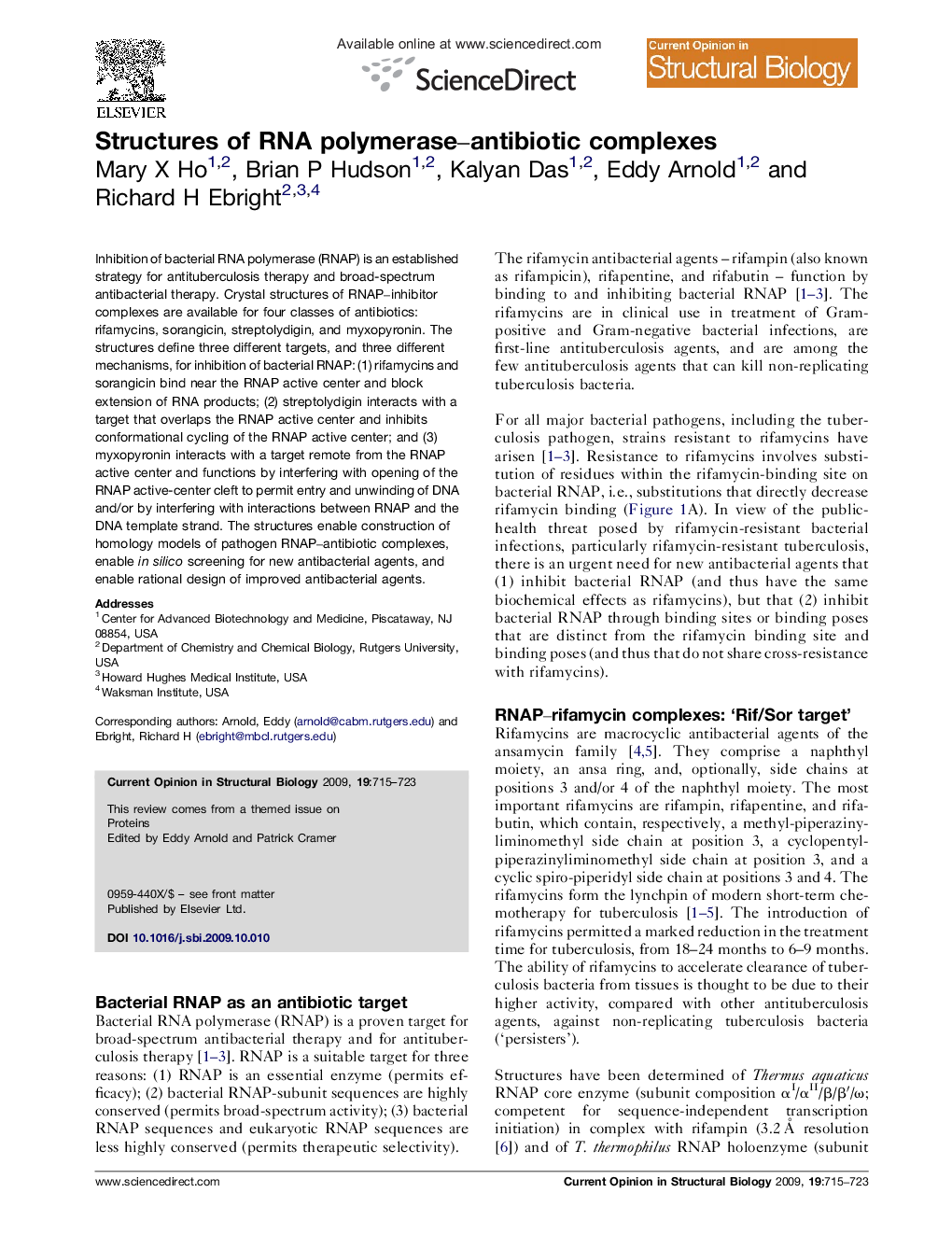| Article ID | Journal | Published Year | Pages | File Type |
|---|---|---|---|---|
| 10822623 | Current Opinion in Structural Biology | 2009 | 9 Pages |
Abstract
Inhibition of bacterial RNA polymerase (RNAP) is an established strategy for antituberculosis therapy and broad-spectrum antibacterial therapy. Crystal structures of RNAP-inhibitor complexes are available for four classes of antibiotics: rifamycins, sorangicin, streptolydigin, and myxopyronin. The structures define three different targets, and three different mechanisms, for inhibition of bacterial RNAP: (1) rifamycins and sorangicin bind near the RNAP active center and block extension of RNA products; (2) streptolydigin interacts with a target that overlaps the RNAP active center and inhibits conformational cycling of the RNAP active center; and (3) myxopyronin interacts with a target remote from the RNAP active center and functions by interfering with opening of the RNAP active-center cleft to permit entry and unwinding of DNA and/or by interfering with interactions between RNAP and the DNA template strand. The structures enable construction of homology models of pathogen RNAP-antibiotic complexes, enable in silico screening for new antibacterial agents, and enable rational design of improved antibacterial agents.
Related Topics
Life Sciences
Biochemistry, Genetics and Molecular Biology
Biochemistry
Authors
Mary X Ho, Brian P Hudson, Kalyan Das, Eddy Arnold, Richard H Ebright,
